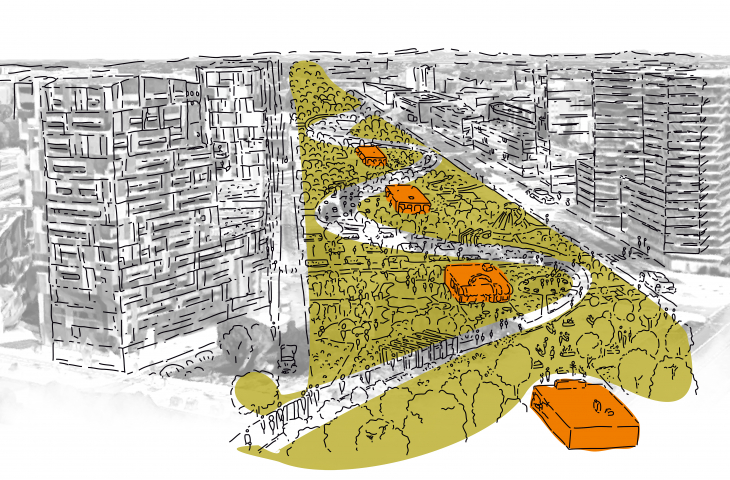, "Zip District/Connected District," is a project made by a group of students from the Faculty of Architecture at the Silesian University of Technology during an urban planning workshop in Italy.
The goal of the workshop was to create urban planning proposals for a degraded, post-industrial, track-separated thirty-hectare area of the Bolognina district in Bologna. The team of the Architecture Department of the Silesian University of Technology, under the supervision of Dr. Tomasz Bradecki and Dr. Agata Twardowch, consisting of: Martyna Suchanek, Karola Subotowicz, Oliwia Tomas, Joanna Golba, Laura Konieczny and Anna Wieczorek designed a new residential and business district with a ribbon building architecture.
, "Zip District/Connected District".
© Silesian University of Technology archives
residential and business district in Bologna
The premise of the project was to connect (like a zipper) the eastern and western parts of Bolognina into a single, cohesive, multifunctional district with space for living and working. The main bonding element of the designed area is urban greenery and an axis of buildings with creative industries. The buildings, inspired by the CCTV building in Beijing by OMA and the Bridge Office in The Hague, merge together at the top to create a distinctive form. In addition, the students proposed almost completely covering the existing railroad tracks with a green bridge.
working on the mockup
© Silesian University of Technology archives
green city
Nearly sixty percent of the design area was devoted to greenery. A green axis , "Green zip/Green connection" was introduced along the residential and commercial/residential buildings. It is a main walking street and a place for active recreation. A group from the Silesian University of Technology decided to preserve selected post-industrial buildings and convert them into services - the old hall was converted into a sports facility. The students also created an elementary school with a kindergarten and a multipurpose market with space for art classes, a dance school and startups. The horizontal , "Town Square/Orange heart" for public celebrations was designed in contrast to the high intensity development in the city center. New buildings with varied, compact masses harmonize with Bolognina's buildings, while differences in the number of floors introduce accents in the urban fabric.
The international workshop in which the students participated was organized in Cesena as part of the ARCHEA project entitled. , "Designing the European medium-sized city".
compiled by {tag:AuthorAiB}
based on materials by Martyna Suchanek
Illustrations courtesy of the Silesian University of Technology












































